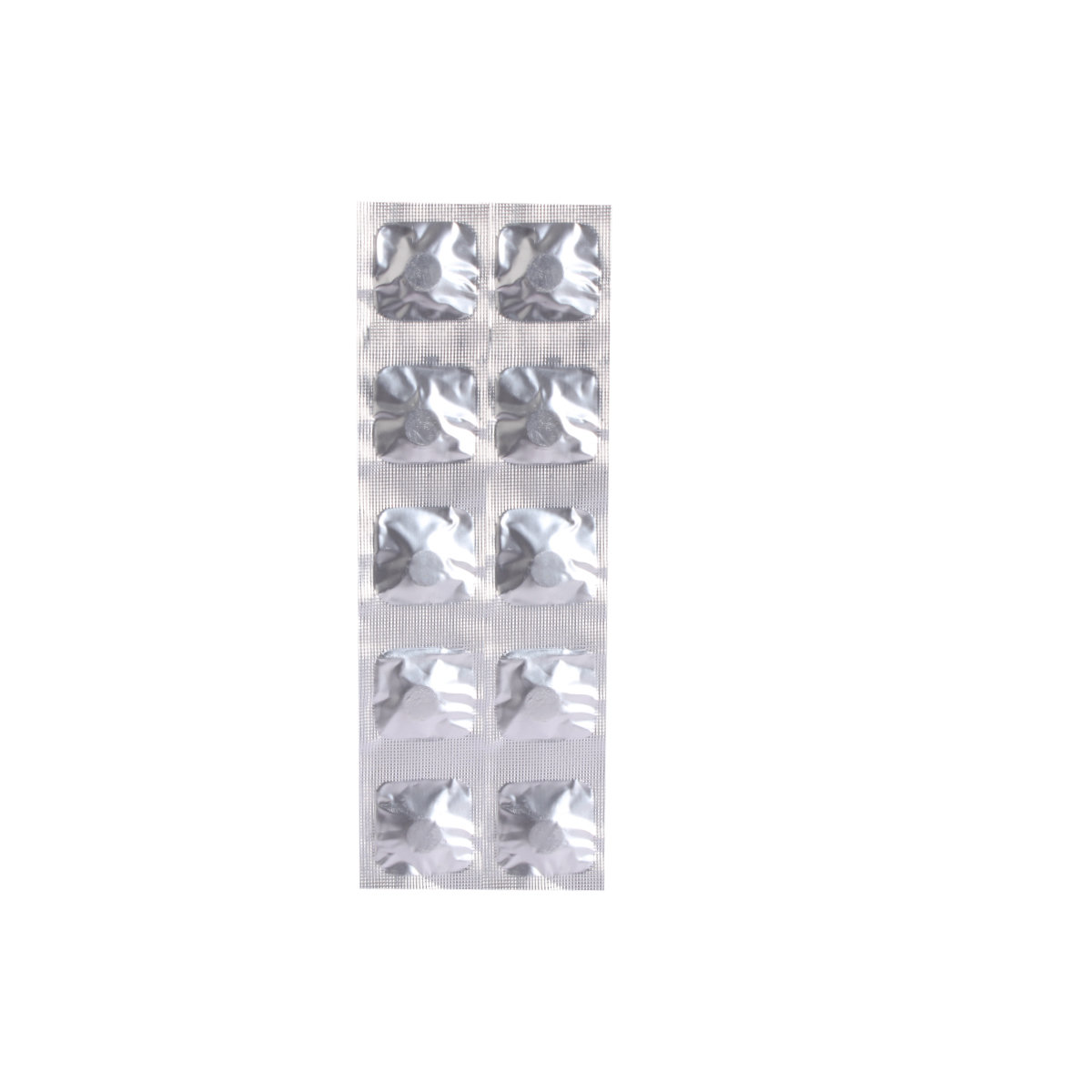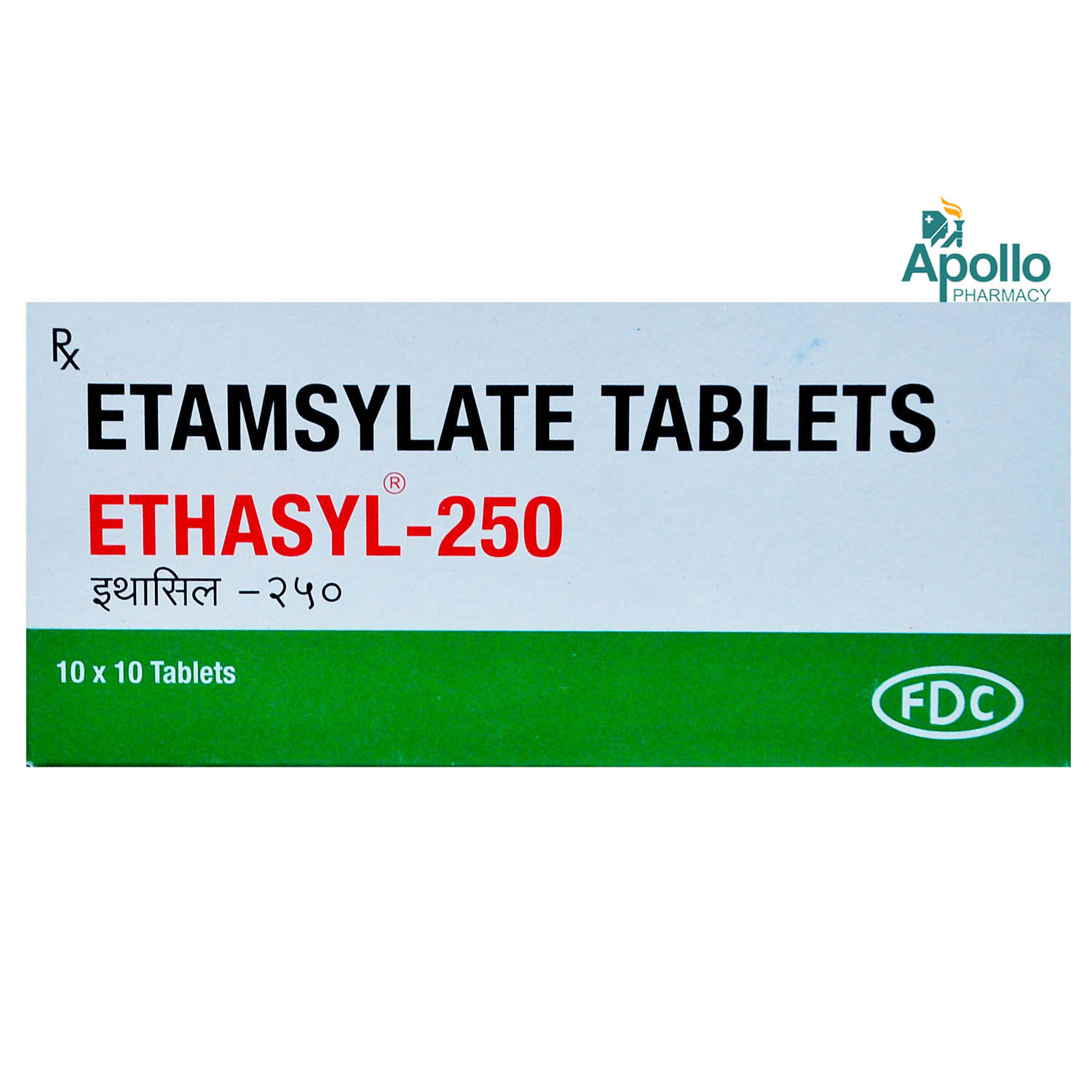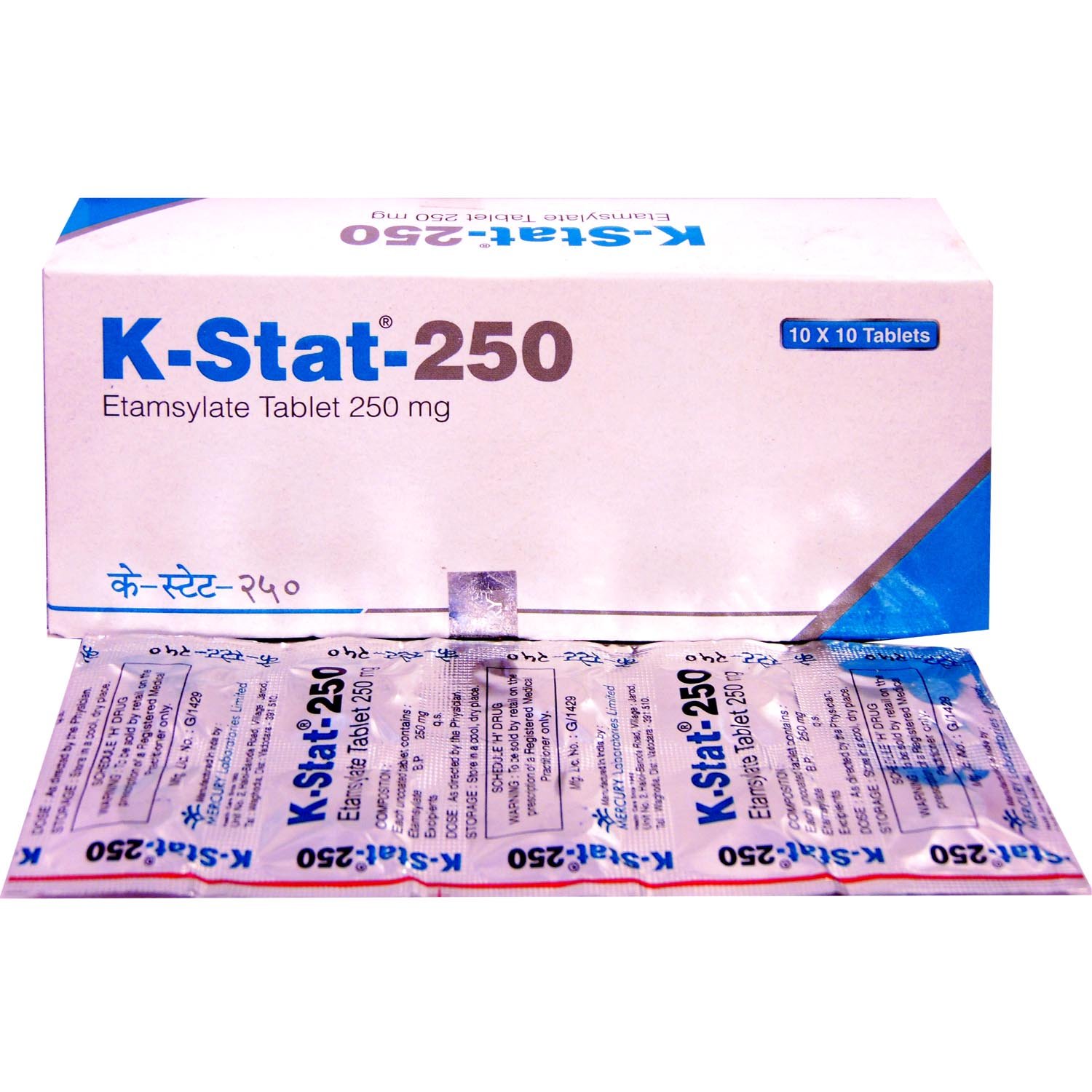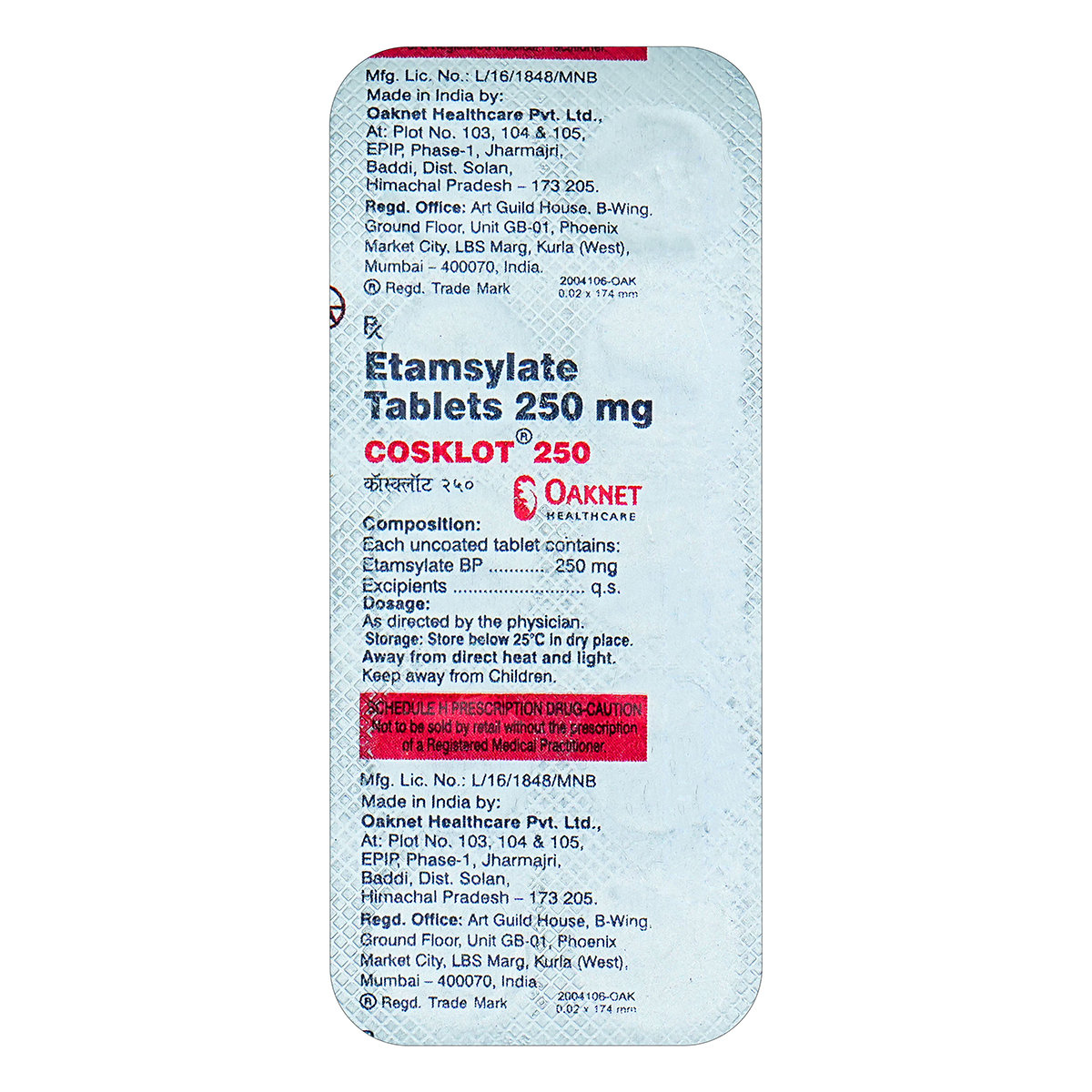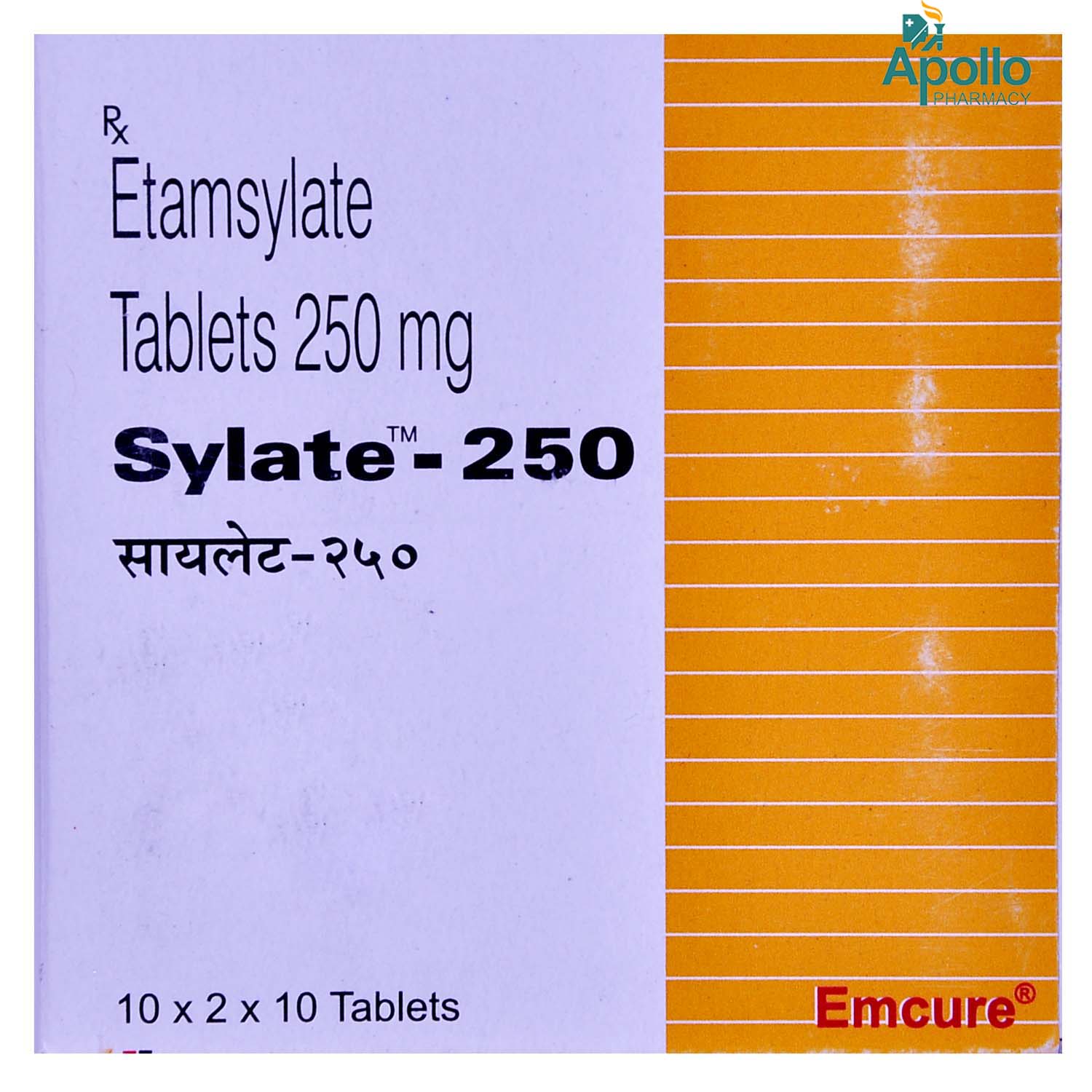ESYLATE 250MG TABLET

MRP ₹187.5
(Inclusive of all Taxes)
₹28.1 Cashback (15%)
know your delivery time
Provide Delivery Location
Composition :
Manufacturer/Marketer :
Consume Type :
Expires on or after :
Return Policy :

Secure Payment

Trusted by 8 Crore Indians

Genuine Products
Therapeutic Class
Country of origin
Manufacturer/Marketer address
Author Details
We provide you with authentic, trustworthy and relevant information
Disclaimer
Alcohol
Safe if prescribed
The interaction of alcohol with ESYLATE 250MG TABLET is unknown. Please consult a doctor if you have any concerns.
Pregnancy
Consult your doctor
Inform your doctor if you are pregnant or suspect pregnancy. Your doctor will weigh the benefits and potential risks before prescribing ESYLATE 250MG TABLET.
Breast Feeding
Consult your doctor
Inform your doctor if you are a nursing mother. Your doctor will weigh the benefits and potential risks before prescribing ESYLATE 250MG TABLET.
Driving
Safe if prescribed
ESYLATE 250MG TABLET has no or negligible influence on the ability to drive and operate machines.
Liver
Consult your doctor
If you have or history or evidence of liver disease, please inform the doctor before prescribing ESYLATE 250MG TABLET. Your doctor may adjust the dose based on your condition.
Kidney
Consult your doctor
If you have or history or evidence of kidney disease, please inform the doctor before prescribing ESYLATE 250MG TABLET. Your doctor may adjust the dose based on your condition.
Children
Safe if prescribed
Etamsylate should be used in children and neonates under the supervision of a doctor.
Product Substitutes
About ESYLATE 250MG TABLET
ESYLATE 250MG TABLET belongs to the class of antihemorrhagic drugs. It is indicated in the treatment of small vessel haemorrhage menorrhagia (menstrual bleeding that lasts more than 7 days) including IUD users and prophylaxis of periventricular haemorrhage in neonates. It prevents and controls bleeding from small blood vessels and neonatal intraventricular haemorrhage. Besides this, ESYLATE 250MG TABLET can prevent periventricular haemorrhages in prematurely born children.
ESYLATE 250MG TABLET contains Etamsylate, a hemostatic agent that improves platelet adhesion by restoring capillary resistance and improving platelet adhesion. On the other hand, this medicine also inhibits the biosynthesis and action of prostaglandin. These effects help to decrease abnormal bleeding.
ESYLATE 250MG TABLET should be used as prescribed by the physician. ESYLATE 250MG TABLET may cause side effects such as headache, skin rash, nausea and low blood pressure. These side effects are short and may go away with time; however, if they continue, consult a doctor.
Inform your doctor if you are allergic to any medications and foods, if you have acute porphyria, fever, non-cancerous growths or blood pigment disorder, or if you are pregnant or breastfeeding. ESYLATE 250MG TABLET is not recommended to use before the onset of bleeding during periods, so inform your doctor about your condition. And also, notify your doctor about your current list of medications, pre-existing diseases, and current health conditions (e.g. pregnancy, upcoming surgery, etc.) in order to rule out any potential negative effects.
Uses of ESYLATE 250MG TABLET
Medicinal Benefits Mweb
Key Benefits
ESYLATE 250MG TABLET contains Etamsylate, a hemostatic agent that improves platelet adhesion by restoring capillary resistance and improving platelet adhesion. On the other hand, ESYLATE 250MG TABLET also inhibits the biosynthesis and action of the prostaglandin. These effects help to decrease abnormal bleeding. Thus it treats, controls, and improves various disease conditions and symptoms.
Directions for Use
Side Effects of ESYLATE 250MG TABLET
- Headache
- Skin Rash
- Nausea
- Low Blood Pressure
Drug Warnings
Before prescribing the ESYLATE 250MG TABLET, let your doctor know if you are allergic to any medications and foods if you have acute porphyria, bronchial asthma, fever, non-cancerous growths or blood pigment disorder, or if you are pregnant or breastfeeding a baby. ESYLATE 250MG TABLET is recommended not to use before the onset of bleeding during periods, so inform your doctor about your condition. And also, inform your doctor about your current list of medications (including vitamins and supplements), pre-existing diseases, and current health conditions (e.g. pregnancy, upcoming surgery, etc.) in order to rule out any potential negative effects.
Drug-Drug Interactions
Drug-Drug Interactions
Login/Sign Up
Drug-Food Interactions
Drug-Food Interactions
Login/Sign Up
Drug-Diseases Interactions
Drug-Diseases Interactions
Login/Sign Up
Habit Forming
Diet & Lifestyle Advise
- Maintain a healthy weight. Stay physically active.
- Consume fresh fruits and vegetables. Avoid spicy, salty, and deep-fried foods. Eating healthy can help you to recover faster.
- Avoid tea, coffee, and cold drinks.
- Drink plenty of fluids to stay hydrated. Fluids are necessary to maintain blood flow in your body.
- Avoid the intake of alcoholic beverages as it can make you dehydrated and also can affect your sleep.
- Avoid physical and psychological stress.
All Substitutes & Brand Comparisons
RX
SYL 250MG TABLET
₹54.5
(₹4.91 per unit)
70% CHEAPERRX
Out of StockEthamore 250 Mg Tablet 10's
Morepen Laboratories Ltd
₹62
(₹5.58 per unit)
66% CHEAPERRX
Stersyl-250 Tablet 10's
Sterkem Pharma Pvt Ltd
₹90
(₹8.1 per unit)
52% CHEAPER

Have a query?
Buy best Vascular System products by
Emcure Pharmaceuticals Ltd
Intas Pharmaceuticals Ltd
Lupin Ltd
Ozone Pharmaceuticals Ltd
Sun Pharmaceutical Industries Ltd
Cipla Ltd
Leeford Healthcare Ltd
Mercury Laboratories Ltd
Torrent Pharmaceuticals Ltd
FDC Ltd
Macleods Pharmaceuticals Ltd
Akumentis Healthcare Ltd
Dr Reddy's Laboratories Ltd
Indoco Remedies Ltd
Mankind Pharma Pvt Ltd
Oaknet Healthcare Pvt Ltd
Reliance Formulation Pvt Ltd
Samarth Life Sciences Pvt Ltd
Walter Bushnell
Wanbury Ltd
Abbott India Ltd
Eris Life Sciences Ltd
Galcare Pharmaceuticals Pvt Ltd
Juggat Pharma Ltd
Knoll Pharmaceuticals Ltd
Kontest Pharmaceuticals
Saf Fermion Ltd
Serdia Pharmaceuticals India Pvt Ltd
Systopic Laboratories Pvt Ltd
Themis Chemicals Ltd
Akcent Healthcare India Pvt Ltd
Alembic Pharmaceuticals Ltd
Amelia Healthcare Pvt Ltd
Canixa Life Sciences Pvt Ltd
East West Pharma India Pvt Ltd
German Remedies Ltd
Glenmark Pharmaceuticals Ltd
Ipca Laboratories Ltd
La Pristine Bioceuticals Pvt Ltd
Morepen Laboratories Ltd
Nexgen Rx Life Science Pvt Ltd
Pfizer Ltd
Rapross Pharmaceuticals Pvt Ltd
Sumac Pharma Pvt Ltd
Theia Health Care Pvt Ltd
Themis Medicare Ltd
Themis Pharmaceutical Ltd
4Care Lifesciences Pvt Ltd
Aar Ess Remedies Pvt Ltd
Aarux Pharmaceuticals Pvt Ltd
Alna Biotech Pvt Ltd
Aphia Healthcare
Aristo Pharmaceuticals Pvt Ltd
Baxter India Pvt Ltd
Bennet Pharmaceuticals Ltd
Bharat Serums and Vaccines Ltd
Biosys Pharmaceuticals Ltd
Bros Enterprises Ltd
Celebrity Biopharma Ltd
Chemo Healthcare Pvt Ltd
Cibeles Pharmaceuticals Pvt Ltd
Comed Chemicals Ltd
Conatus Healthcare Pvt Ltd
Cresha Lifesciences
Cute Care Life Sciences Pvt Ltd
Elbrit Life Sciences Pvt Ltd
Euro Biogenics
Icon Life Sciences
J B Chemicals & Pharmaceuticals Ltd
Kee Pharma Ltd
Kemiq Lifesciences Pvt Ltd
Kivi Labs Ltd
Lincoln Pharmaceuticals Ltd
Medchronic Health Care
Medgen Drugs And Laboratories Pvt Ltd
Megma Healthcare Pvt Ltd
Novartis India Ltd
Olcare Laboratories Pvt Ltd
Ornate Labs Pvt Ltd
Q Check Pharmaceuticals
Saan Labs
Stadmed Pvt Ltd
Std Pharmaceuticals Pvt Ltd
Zydus Cadila
3G Life Sciences
Accent Pharmaceuticals & Diagnostics
Adroit Biomed Ltd
Aishwarya Healthcare
Ajanta Pharma Ltd
Akesiss Pharma Pvt Ltd
Albert David Ltd
Algen Healthcare Ltd
Amazone Pharmaceuticals Pvt Ltd
Amstel Pharma Pvt Ltd
Anhox Healthcare Pvt Ltd
Apios Lifesciences Pvt Ltd
Args India Pharma Pvt Ltd
Ark Life Science Pvt Ltd
Arvincare
Aztomax Biotech





